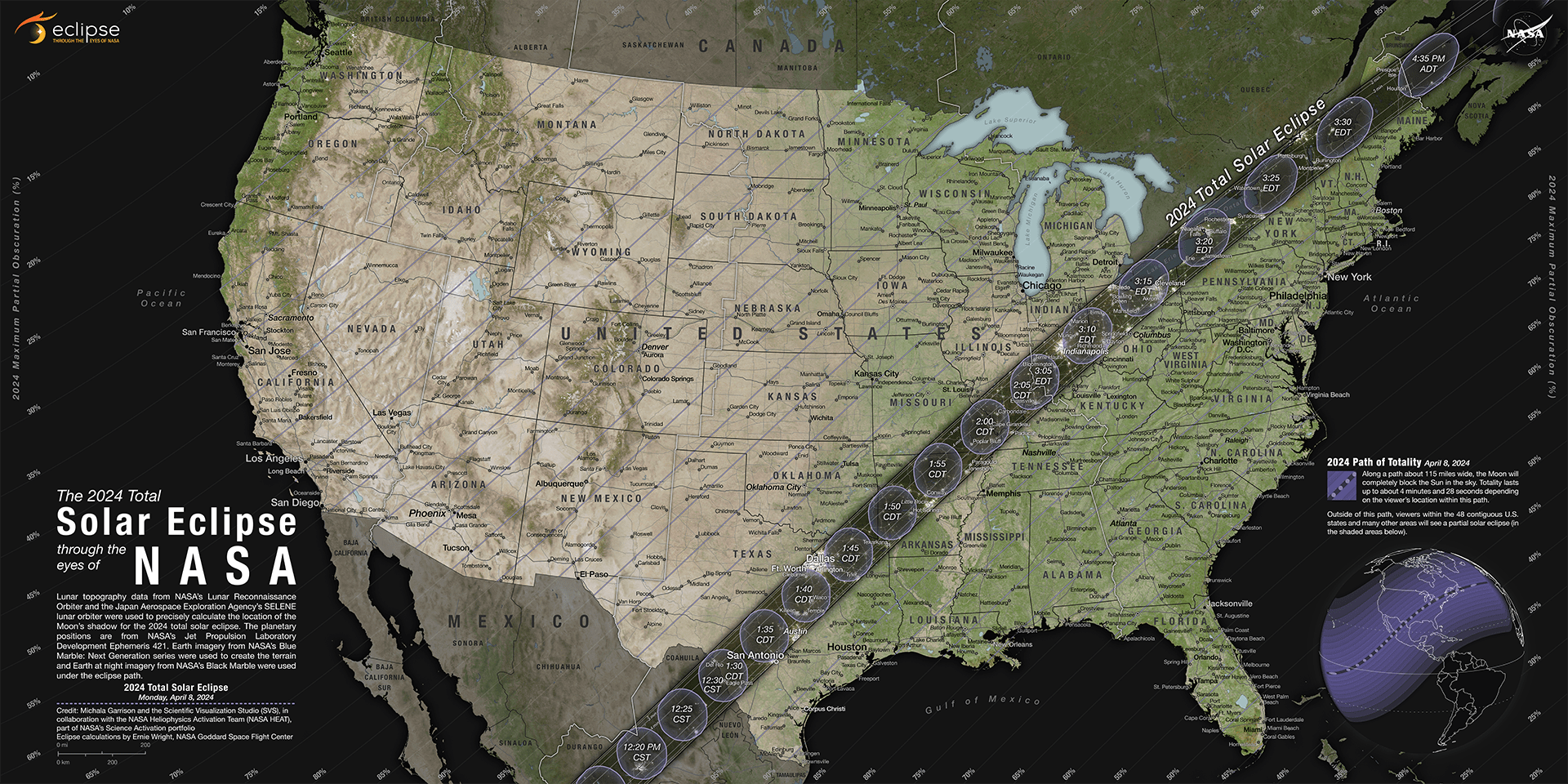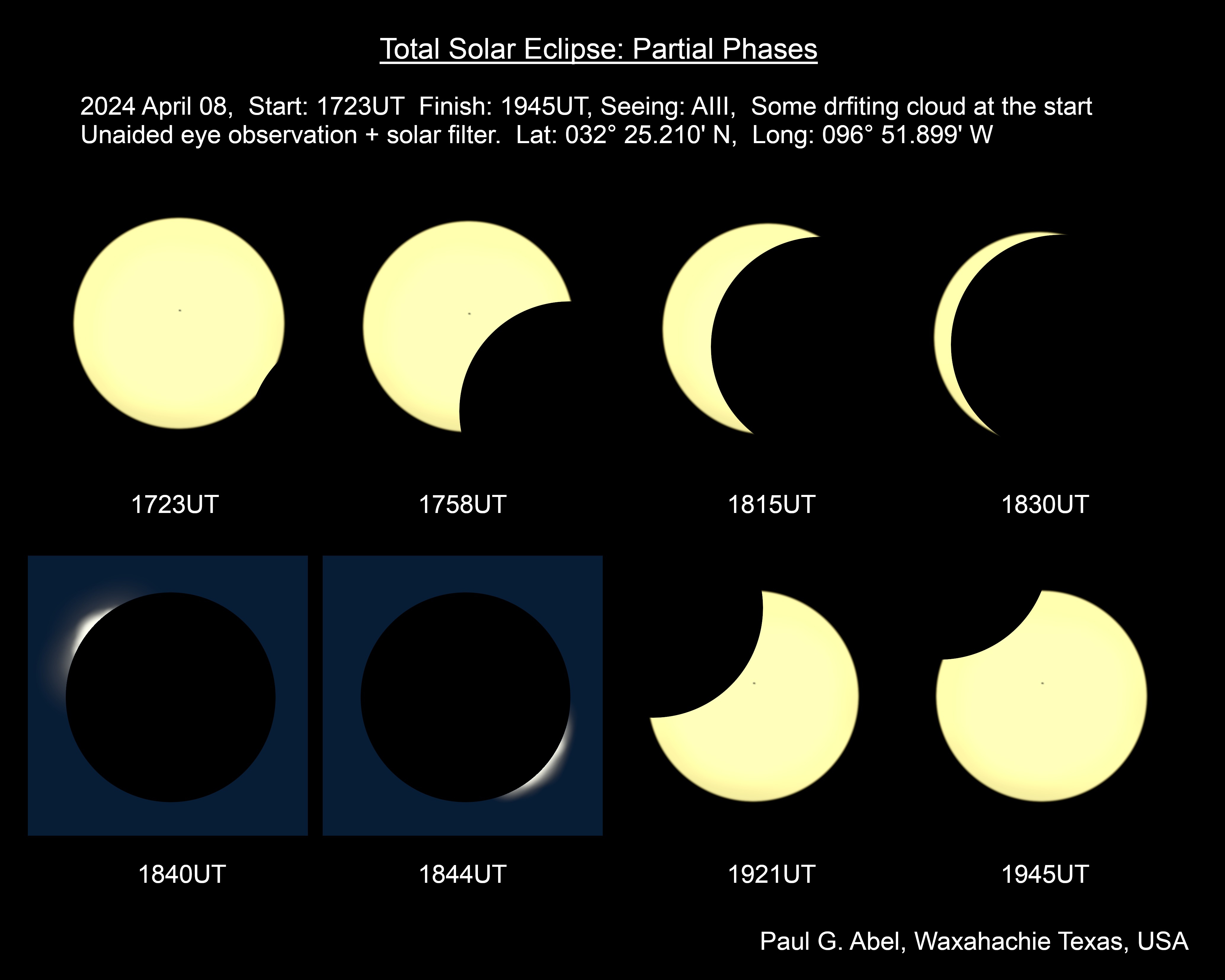Total eclipse expedition to Waxahachie, Texas, USA
2024 October 9
We present observations made by an expedition of BAA members to see the total solar eclipse on 2024 Apr 8 at Waxahachie, Texas. A number of different observations were attempted, including visual and digital imaging of all parts of the eclipse, measurement of local air temperature, and a search for shadow bands. In this paper, we comment on the results.

Introduction
On 2024 Apr 8, a total solar eclipse (TSE) was visible along a narrow track passing across the North American continent. It was the second recent TSE visible from the USA – the previous occurring in 2017. Dubbed ‘The Great American Eclipse Part II’, the eclipse track made landfall in Mexico moving northeast up through Texas along with many other states before passing into Canada and out into the Atlantic Ocean (Figure 1).1 Many members of the BAA travelled to a variety of locations situated along the path of totality, however, this report deals with observations made at the authors’ eclipse site in Waxahachie, Texas. Specifically, our observing site was located at latitude 32° 25.210′ N, longitude 96° 51.899′ W, and altitude 200 m – these coordinates were obtained from a Garmin ETREX GPS receiver and the positions cross-checked with several members’ smart phones.
While many of our eclipse party were content to observe and photograph the eclipse, the observers listed in Table 1 intended to make more specialised observations in a scientific manner. In all images and drawings, north is towards the top.
Observations
During the week, the weather predictions for our site looked increasingly poor and the day before totality, some were forecasting powerful storms which were building to the west. Pete Lawrence, the senior astronomer on the tour, had been carefully monitoring the weather and using several models to predict conditions on Apr 8. He was cautiously optimistic about our prospects which he discussed in a lecture to the group the evening before.
The morning of Apr 8 was most unpromising: the sky was filled with featureless white clouds and visibility was very poor. As we made our way by coach to the observing site, structure started to appear in the clouds – a good sign! Not long after, large gaps began appearing and for the first time since landing in the USA, everyone was starting to think we might get lucky with the weather after all.

An experiment had been devised to measure and record air temperature at the eclipse viewing site. The aim was to characterise the variation in shade air temperature at a higher time resolution than had been noted from most published data captured throughout prior TSEs, and compare this with both the generally expected temperature profile and previous published temperature measurements, considering a variety of published sources and articles.2,3,4 An Elitech RC-5+ USB Temperature Data Logger, calibrated to a known accuracy of ± 0.1°C within the temperature range of interest, was configured to capture measurements from the supplied external probe at 10-s intervals.5 To reduce the potential effect of direct heating, the probe was suspended in free air at the centre of a small cylindrical container with louvred sides. Further, the apparatus was placed on a patch of soil in the shade of a tree at the centre of the eclipse viewing site, and securely pegged in place.
Members can view the full illustrated article in PDF format by returning to the previous page. Not a member? Why not join today?
| The British Astronomical Association supports amateur astronomers around the UK and the rest of the world. Find out more about the BAA or join us. |
